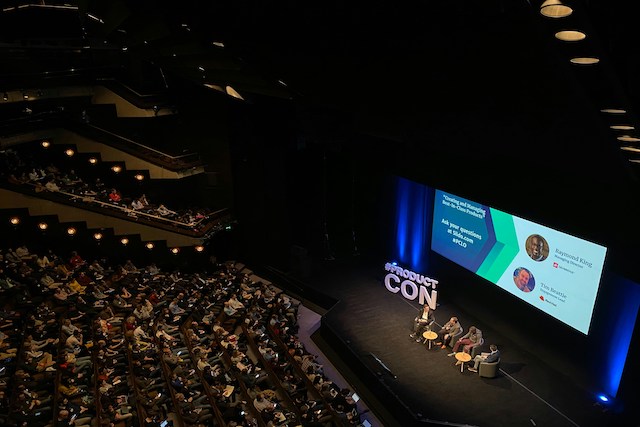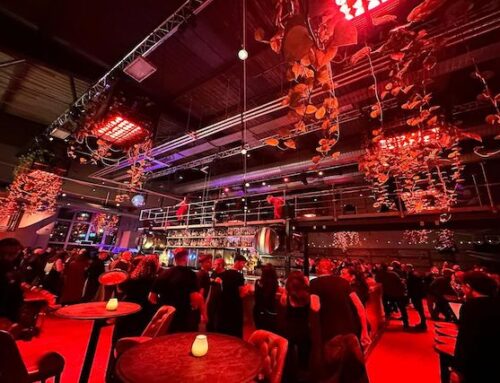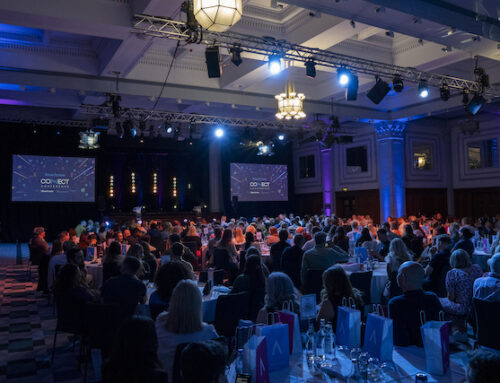
ConnectIn

Even established event managers sometimes find that hybrid event planning feels like patting your tummy while rubbing your head. After all, delivering one gathering can be challenging, but here you’re essentially running two at the same time. Madness! It’s certainly not easy, but when you nail it, you’ll attain event mastery, weaving magic that connects people across continents while also serving the folks in the room.
Corporate hybrid events have evolved from sticking a camera in the corner to increasingly sophisticated productions with countless moving parts. Whether you’re planning your first hybrid corporate events or the latest of many, this checklist will help you keep on top of the various micro details that lead to super glossy, super professional experiences.
Phase 1: The Foundation Stage (8-12 weeks out)
This is where dreams meet spreadsheets and reality checks abound. The biggest challenge? Everyone thinks hybrid event planning is just “regular events plus a stream”. Spoiler alert: it’s not, you’re actually constructing the DNA of your event here. Getting it wrong at this stage would be like building on a faulty foundation; every subsequent decision will be off-balance, putting the entire structure at risk.
- Define Success: Are you aiming for views, sales, positive feedback, or something else? Apply this thinking to create Key Performance Indicators (KPIs) for both in-person and virtual crowds. After all, they’ll expect different things, so assuming otherwise is a rocky road.
- Budget Reality Check: Live events allocate 10-15% for AV, whereas hybrid corporate events sometimes demand 35-40% for technology alone. This isn’t optional, so try to be as accurate as possible to keep your budget on track.
- Create Audience Personas: It’s vital to know both virtual and in-person tribes inside-out. While venue-based crowds thrive on the spontaneity of the moment, virtual audiences tend to value convenience and structured interactions. The better you understand each group, the easier it will be to engage them.
- Align Objectives: Consider your overall business goals and set engagement targets for each audience segment. If your business goal is launching a new software product, your in-person objective might be securing 20+ face-to-face demos, while your virtual plan could be getting 200+ trial sign-ups.
Phase 2: Infrastructure (6-8 weeks out)
Welcome to the technology battle, where anything can go awry and even backup plans need backup plans. The challenge at this stage of hybrid event planning is building a tech stack that won’t collapse under pressure while keeping costs from spiraling into the stratosphere. Choose well, and your hybrid corporate events will start to take shape nicely.
- Venue Requirements: Choosing a venue is a crucial early step. At a minimum, your location should offer robust internet speed, professional lighting that makes speakers look good, and acoustics that make the sound ring out clearly.
- Platform Selection is Essential: Test live feeds and streams with maximum capacity in mind to ensure it can handle a full load.
- Integration Matters: Your registration system shouldn’t require a computer science degree to connect with streaming platforms. Make it as frictionless as possible to signal your user-friendly sense of professionalism.
- Plan for Everything: We’re talking backup internet, backup streaming equipment, backup everything. If tech fails (and, trust us, it does), you’ll thank us later!
Phase 3: Content Creation (4-6 weeks out)
Here’s where creative vision collides with technical limitations, and speakers discover just how camera-ready they really are. The challenge is crafting content that engages both audiences without boring either. Balance is everything. If you lean too far toward satisfying one crowd, the other might mentally check out.
- Create Dual-Content: Craft content that will work for both audiences simultaneously. Virtual guests often have shorter attention spans, whereas in-person groups will stay switched on for longer but will also expect slick transitions from one section to another.
- Interactive Elements Rock: The likes of live polling, Q&A systems, and virtual breakout rooms keep everyone interested. For a more sustained, far-reaching buzz, social media integration is a nice touch.
- Speaker Preparation: Nail dual-audience engagement, master key camera techniques, and conduct full tech rehearsals. Why? Because nothing kills the vibe at corporate hybrid events faster than speakers who neglect their virtual audience.
Phase 4: Marketing Madness (3-4 weeks out)
Marketing hybrid corporate events is like advertising a restaurant that serves both in-person diners and delivery customers; similar products but pretty different experiences. The challenge is creating similarly tasty menus for each guest type without losing orders of either offering.
- Develop Separate Marketing Tracks: Highlight the unique value propositions of each format. The live audience promotion can emphasise the networking and exclusive access angle, while the online campaign should focus on convenience, interactivity, and global reach.
- Registration Needs Pure Precision: As with marketing, design separate registration tracks for each audience, including automated confirmations with platform access, and clear tech requirements (to prevent day-of disasters).
- Create Compelling Messaging: Each format has its own USP, emphasise this without stealing registrations from either audience type.
Phase 5: Final Countdown (1-2 weeks out)
This is it. Crunch time. Where all your planning either pays off, or the gaps in preparation are brutally highlighted. At this stage, the challenge is maintaining quality control while managing the pre-event jitters and last-minute hiccups that almost always reveal themselves. Whatever happens, stay calm and, if the worst does happen, take a deep breath and lean into those contingency plans.
- Regular Staff Briefings: Make sure everyone understands hybrid corporate event protocols, communication channels, emergency procedures, etc. Your team should move like a well-oiled machine, so make sure everyone is on the same page and fully aware of their roles.
- Full Dress Rehearsals are Essential: Test everything with actual speakers, push the virtual platform’s functionality under a heavier load, and practice emergency procedures and contingency plans.
- Start Pre-event Setup 3-4 Hours Early: Test all equipment, double or even triple-check connectivity, and brief staff one final time. Finally, your virtual platform should be online long before anyone attempts to login to ensure it’s stable.
Phase 6: It’s Showtime! (Event Day)
Game day brings its own special brand of chaos; from tech glitches to unexpected attendee behavior, and even the occasional speaker wobble. The challenge is maintaining professional composure while troubleshooting problems in real-time. Your audience doesn’t want to see you sweat, so stay cool and be prepared to adapt.
During the event, monitor engagement metrics religiously. Virtual chat activity, poll participation, and audio quality indicators all provide huge insights into the audience experience. Stay sharp and be ready to jump immediately on issues to stop small problems becoming show-stoppers.
Most importantly, stay flexible and be ready to pivot. Corporate hybrid events are like living, breathing creatures that can be tough to tame. Your job is to stay in the saddle with a smile on your face to hide any hint of the anxieties bubbling behind the scenes.
Phase 7: Victory Lap (Within 48 Hours of the Event Ending)
You did it! The event is over, but there’s still a bit of valuable work to be done. The post-event follow-up can determine whether attendees remember your event fondly or merely as that thing they attended that time. The challenge is maintaining momentum when your team wants to put their feet up and bask in the glow of a job well done.
Before the dust settles, gather feedback while experiences are fresh. It’s important to create separate surveys for the two audience types, as each will reveal priceless insights that can be used to improve future hybrid event planning efforts. Any analytics gleaned from your virtual platform could be a goldmine for perfecting the next occasion.
Finally, your follow-up strategy should aim to nurture both audiences appropriately, keeping them in the loop for future gatherings. Thank you messages, recorded content access, and resource sharing all keep engagement alive and kicking beyond tear down.
Hybrid Event Planning Made Easy with ConnectIn Events
There’s no way to sugarcoat it; corporate hybrid events are among the most challenging to plan and execute. But here’s why we think they’re worth the effort: in our connected global economy, live/remote gatherings offer serious value for businesses with distantly situated teams. They totally eliminate geographical barriers, reduce travel costs, and create inclusive experiences that cater to different working styles and circumstances.
However, the sheer volume of moving parts provides countless ways for things to go sideways. Technical glitch or poorly briefed speaker? Things like this can turn an otherwise professional event into an expensive mess. That’s why ConnectIn Events exists. We handle everything from venue-finding and event design to virtual and hybrid execution, bringing battle-tested systems that deliver flawless experiences. A full-service collective, we’ve been doing this since 2009, so we know exactly what it takes to get right.
Ready to create corporate hybrid events that get people talking for all the right reasons? Contact us today to chat about how we can make your next event a flawless experience for your business.
Share this post
Related posts
- Unique Venues Manchester: 12 Unusual Spaces That Make Events Unmissable
- 7 Best Venues in Manchester for Corporate Events
- 7 Reasons You Need a Hybrid Event Planner for Your Next Corporate Event
- Event Trends 2026: How to Create Corporate Events People Remember
- The Ultimate Hybrid Event Planning Checklist (for Corporate Events)



